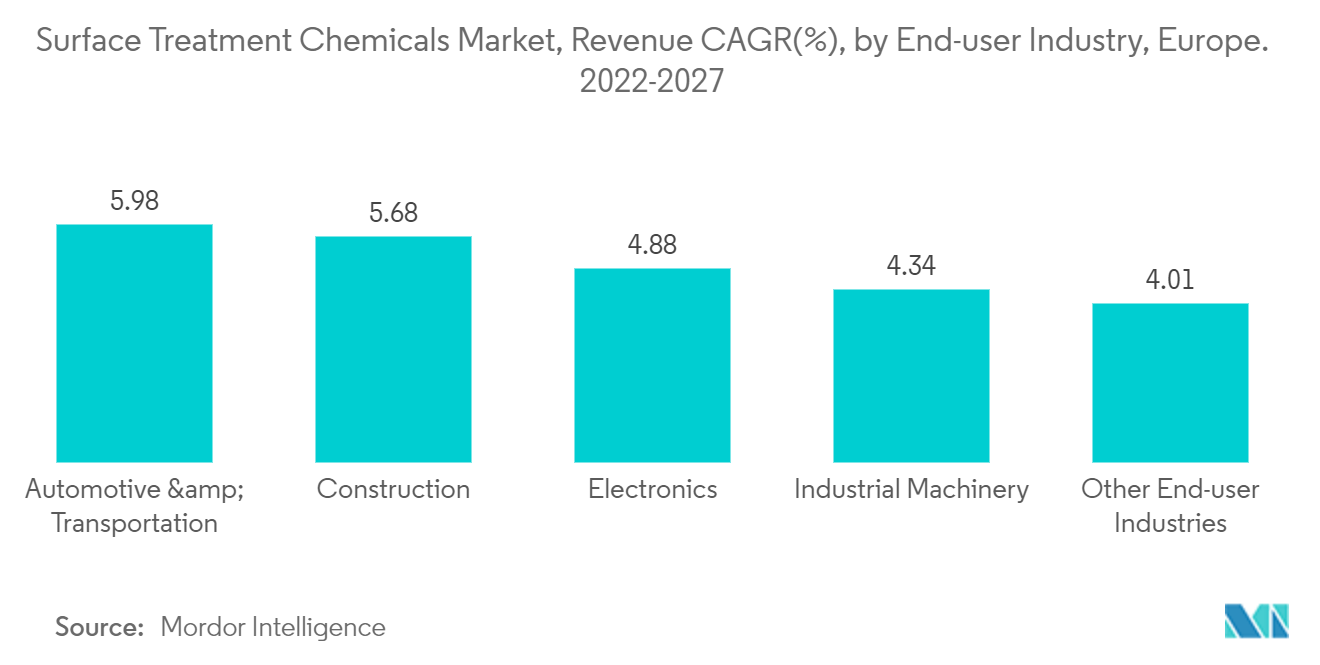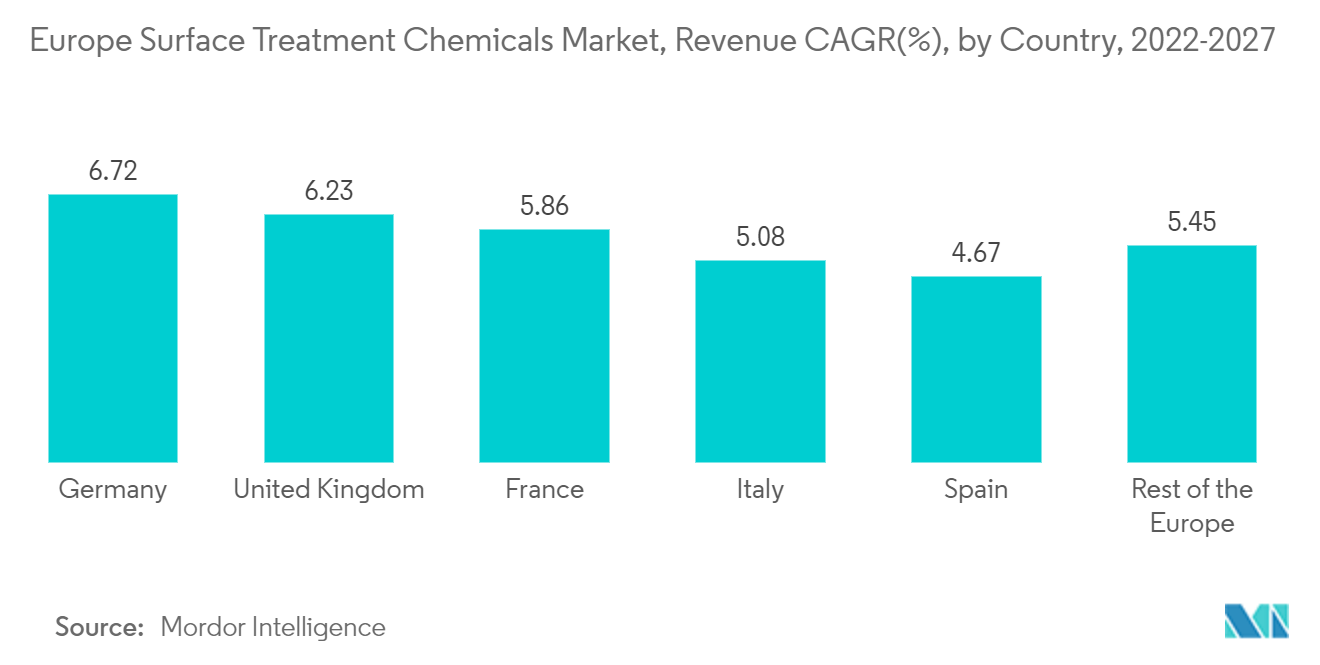Market Trends of Europe Surface Treatment Chemicals Industry
This section covers the major market trends shaping the Europe Surface Treatment Chemicals Market according to our research experts:
Strong Demand from the Automotive and Transportation Industry
- Surface treatment is used on metal parts in the automotive and aircraft manufacturing industries to add texture, boost durability, and improve anti-corrosive qualities.
- The surface treatment market is mostly dominated by industries in the transportation sector, such as those that manufacture aircraft. Surface treatment chemicals aid in preserving the structural integrity of aircraft parts for longer periods of time. Aircraft parts must survive hostile environments and defend against corrosion.
- The European aerospace industry manufactures a diverse range of vehicles, including aircraft, helicopters, engines, and industry-related equipment. According to Eurostat, France is the largest exporter of large planes in Europe, followed by Germany, Ireland, and the United Kingdom.
- The aerospace sector in the United Kingdom is both the largest in Europe and the second largest in the entire world. The United Kingdom will invest USD 710 million in aerospace technology development.
- Another significant driver of the demand for surface treatment chemicals is the automotive industry. By the end of 2021, 3,400,000 automobiles were produced in Europe, while 932,488 automobiles were produced in the United Kingdom, according to OICA.
- All the above factors are expected to drive the surface treatment chemicals market in Europe.

Germany to Dominate the Market
- Surface treatment chemicals are in high demand in the automotive and aerospace industries. Germany produces more than 6% of the world's cars and more than 12% of airplanes, which has a positive impact on the market for surface treatment chemicals that are used to treat automotive and aerospace parts.
- Germany is Europe's largest automotive market, accounting for around 25% of all passenger cars manufactured and around 20% of all new registrations. The country is attributed to high-tech automotive products, including autonomous driving technology.
- According to OICA, Germany is the world's largest automobile industry. By the end of 2021, 3,308,692 vehicles were produced in Germany. With about 40 assembly and engine production facilities, Germany dominates the European auto industry and produces one-third of all the cars produced in the continent. As of October 2022, German passenger car sales were up by 16.8%.
- Aeroplane manufacturing sector is one the leading ones in Europe, and Germany is the second-largest exporter of heavy aircraft.
- Considering the aforementioned factors, the European surface treatment chemical market is anticipated to rise steadily over the forecast period.


